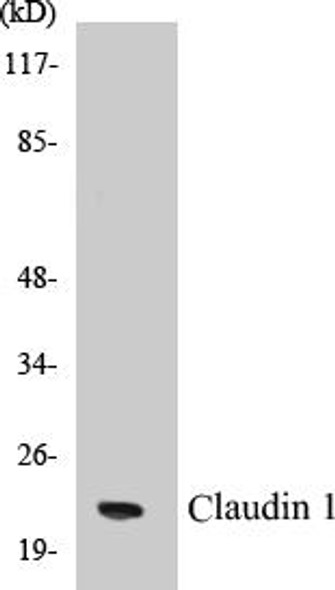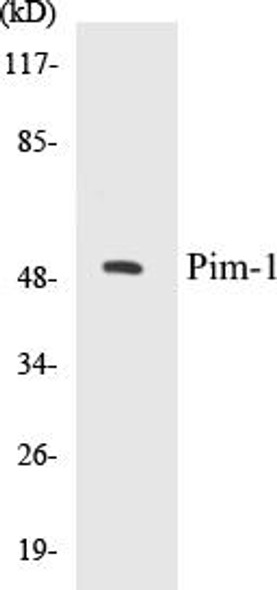MAGE-1 Colorimetric Cell-Based ELISA Kit
- SKU:
- CBCAB00324
- Product Type:
- ELISA Kit
- ELISA Type:
- Cell Based
- Research Area:
- Epigenetics and Nuclear Signaling
- Reactivity:
- Human
- Detection Method:
- Colorimetric
Description
MAGE-1 Colorimetric Cell-Based ELISA Kit
The MAGE-1 Colorimetric Cell-Based ELISA Kit is a cutting-edge tool designed for the accurate quantification of MAGE-1 protein levels in cell cultures. This kit offers high sensitivity and specificity, allowing for reliable and reproducible results in a variety of research settings.MAGE-1 (Melanoma-associated antigen 1) is a protein associated with cancer development and progression, making it a valuable biomarker for studying oncogenesis and potential therapeutic interventions. By measuring MAGE-1 levels in cell cultures, researchers can gain insight into the molecular mechanisms underlying cancer biology and explore new avenues for targeted treatment strategies.
The MAGE-1 Colorimetric Cell-Based ELISA Kit is an invaluable resource for researchers seeking to further their understanding of cancer biology and develop novel approaches for cancer diagnosis and treatment. With its high performance and ease of use, this kit is an essential tool for advancing research in the field of oncology.
| Product Name: | MAGE-1 Colorimetric Cell-Based ELISA |
| Product Code: | CBCAB00324 |
| ELISA Type: | Cell-Based |
| Target: | MAGE-1 |
| Reactivity: | Human |
| Dynamic Range: | > 5000 Cells |
| Detection Method: | Colorimetric 450 nmStorage/Stability:4°C/6 Months |
| Format: | 96-Well Microplate |
The MAGE-1 Colorimetric Cell-Based ELISA Kit is a convenient, lysate-free, high throughput and sensitive assay kit that can detect MAGE-1 protein expression profile in cells. The kit can be used for measuring the relative amounts of MAGE-1 in cultured cells as well as screening for the effects that various treatments, inhibitors (ie siRNA or chemicals), or activators have on MAGE-1.
Qualitative determination of MAGE-1 concentration is achieved by an indirect ELISA format. In essence, MAGE-1 is captured by MAGE-1-specific primary antibodies while the HRP-conjugated secondary antibodies bind the Fc region of the primary antibody. Through this binding, the HRP enzyme conjugated to the secondary antibody can catalyze a colorimetric reaction upon substrate addition. Due to the qualitative nature of the Cell-Based ELISA, multiple normalization methods are needed:
| 1. | A monoclonal antibody specific for human GAPDH is included to serve as an internal positive control in normalizing the target absorbance values. |
| 2. | Following the colorimetric measurement of HRP activity via substrate addition, the Crystal Violet whole-cell staining method may be used to determine cell density. After staining, the results can be analysed by normalizing the absorbance values to cell amounts, by which the plating difference can be adjusted. |
| Database Information: | Gene ID: 4100, UniProt ID: P43355/Q8WWH6, OMIM: 300016, Unigene: Hs.72879 |
| Gene Symbol: | MAGEA1 |
| Sub Type: | None |
| UniProt Protein Function: | MAGE-A1: a tumor antigen expressed in a variety of tumor cells and in the testis. May play a role in embryonal development and tumor transformation or aspects of tumor progression. Antigen recognized on a melanoma by autologous cytolytic T-lymphocytes. |
| UniProt Protein Details: | Protein type:Cell surface Chromosomal Location of Human Ortholog: Xq28 Cellular Component: cytoplasm; plasma membrane; nucleus Molecular Function:protein binding; histone deacetylase binding Biological Process: transcription, DNA-dependent; negative regulation of Notch signaling pathway; negative regulation of transcription from RNA polymerase II promoter |
| NCBI Summary: | This gene is a member of the MAGEA gene family. The members of this family encode proteins with 50 to 80% sequence identity to each other. The promoters and first exons of the MAGEA genes show considerable variability, suggesting that the existence of this gene family enables the same function to be expressed under different transcriptional controls. The MAGEA genes are clustered at chromosomal location Xq28. They have been implicated in some hereditary disorders, such as dyskeratosis congenita. [provided by RefSeq, Jul 2008] |
| UniProt Code: | P43355 |
| NCBI GenInfo Identifier: | 1170855 |
| NCBI Gene ID: | 4100 |
| NCBI Accession: | P43355.1 |
| UniProt Secondary Accession: | P43355,O00346, B2RC81, |
| UniProt Related Accession: | P43355,AAB33086 |
| Molecular Weight: | 309 |
| NCBI Full Name: | Melanoma-associated antigen 1 |
| NCBI Synonym Full Names: | melanoma antigen family A, 1 (directs expression of antigen MZ2-E) |
| NCBI Official Symbol: | MAGEA1 |
| NCBI Official Synonym Symbols: | CT1.1; MAGE1 |
| NCBI Protein Information: | melanoma-associated antigen 1; antigen MZ2-E; MAGE-1 antigen; melanoma antigen MAGE-1; cancer/testis antigen 1.1; melanoma antigen family A 1; melanoma-associated antigen MZ2-E; cancer/testis antigen family 1, member 1 |
| UniProt Protein Name: | Melanoma-associated antigen 1 |
| UniProt Synonym Protein Names: | Antigen MZ2-E; Cancer/testis antigen 1.1; CT1.1; MAGE-1 antigen |
| Protein Family: | Melanoma-associated antigen |
| UniProt Gene Name: | MAGEA1 |
| UniProt Entry Name: | MAGA1_HUMAN |
| Component | Quantity |
| 96-Well Cell Culture Clear-Bottom Microplate | 2 plates |
| 10X TBS | 24 mL |
| Quenching Buffer | 24 mL |
| Blocking Buffer | 50 mL |
| 15X Wash Buffer | 50 mL |
| Primary Antibody Diluent | 12 mL |
| 100x Anti-Phospho Target Antibody | 60 µL |
| 100x Anti-Target Antibody | 60 µL |
| Anti-GAPDH Antibody | 60 µL |
| HRP-Conjugated Anti-Rabbit IgG Antibody | 12 mL |
| HRP-Conjugated Anti-Mouse IgG Antibody | 12 mL |
| SDS Solution | 12 mL |
| Stop Solution | 24 mL |
| Ready-to-Use Substrate | 12 mL |
| Crystal Violet Solution | 12 mL |
| Adhesive Plate Seals | 2 seals |
The following materials and/or equipment are NOT provided in this kit but are necessary to successfully conduct the experiment:
- Microplate reader able to measure absorbance at 450 nm and/or 595 nm for Crystal Violet Cell Staining (Optional)
- Micropipettes with capability of measuring volumes ranging from 1 µL to 1 ml
- 37% formaldehyde (Sigma Cat# F-8775) or formaldehyde from other sources
- Squirt bottle, manifold dispenser, multichannel pipette reservoir or automated microplate washer
- Graph paper or computer software capable of generating or displaying logarithmic functions
- Absorbent papers or vacuum aspirator
- Test tubes or microfuge tubes capable of storing ≥1 ml
- Poly-L-Lysine (Sigma Cat# P4832 for suspension cells)
- Orbital shaker (optional)
- Deionized or sterile water
*Note: Protocols are specific to each batch/lot. For the correct instructions please follow the protocol included in your kit.
| Step | Procedure |
| 1. | Seed 200 µL of 20,000 adherent cells in culture medium in each well of a 96-well plate. The plates included in the kit are sterile and treated for cell culture. For suspension cells and loosely attached cells, coat the plates with 100 µL of 10 µg/ml Poly-L-Lysine (not included) to each well of a 96-well plate for 30 minutes at 37°C prior to adding cells. |
| 2. | Incubate the cells for overnight at 37°C, 5% CO2. |
| 3. | Treat the cells as desired. |
| 4. | Remove the cell culture medium and rinse with 200 µL of 1x TBS, twice. |
| 5. | Fix the cells by incubating with 100 µL of Fixing Solution for 20 minutes at room temperature. The 4% formaldehyde is used for adherent cells and 8% formaldehyde is used for suspension cells and loosely attached cells. |
| 6. | Remove the Fixing Solution and wash the plate 3 times with 200 µL 1x Wash Buffer for five minutes each time with gentle shaking on the orbital shaker. The plate can be stored at 4°C for a week. |
| 7. | Add 100 µL of Quenching Buffer and incubate for 20 minutes at room temperature. |
| 8. | Wash the plate 3 times with 1x Wash Buffer for 5 minutes each time. |
| 9. | Add 200 µL of Blocking Buffer and incubate for 1 hour at room temperature. |
| 10. | Wash 3 times with 200 µL of 1x Wash Buffer for 5 minutes each time. |
| 11. | Add 50 µL of 1x primary antibodies (Anti-MAGE-1 Antibody and/or Anti-GAPDH Antibody) to the corresponding wells, cover with Parafilm and incubate for 16 hours (overnight) at 4°C. If the target expression is known to be high, incubate for 2 hours at room temperature. |
| 12. | Wash 3 times with 200 µL of 1x Wash Buffer for 5 minutes each time. |
| 13. | Add 50 µL of 1x secondary antibodies (HRP-Conjugated AntiRabbit IgG Antibody or HRP-Conjugated Anti-Mouse IgG Antibody) to corresponding wells and incubate for 1.5 hours at room temperature. |
| 14. | Wash 3 times with 200 µL of 1x Wash Buffer for 5 minutes each time. |
| 15. | Add 50 µL of Ready-to-Use Substrate to each well and incubate for 30 minutes at room temperature in the dark. |
| 16. | Add 50 µL of Stop Solution to each well and read OD at 450 nm immediately using the microplate reader. |
(Additional Crystal Violet staining may be performed if desired – details of this may be found in the kit technical manual.)










